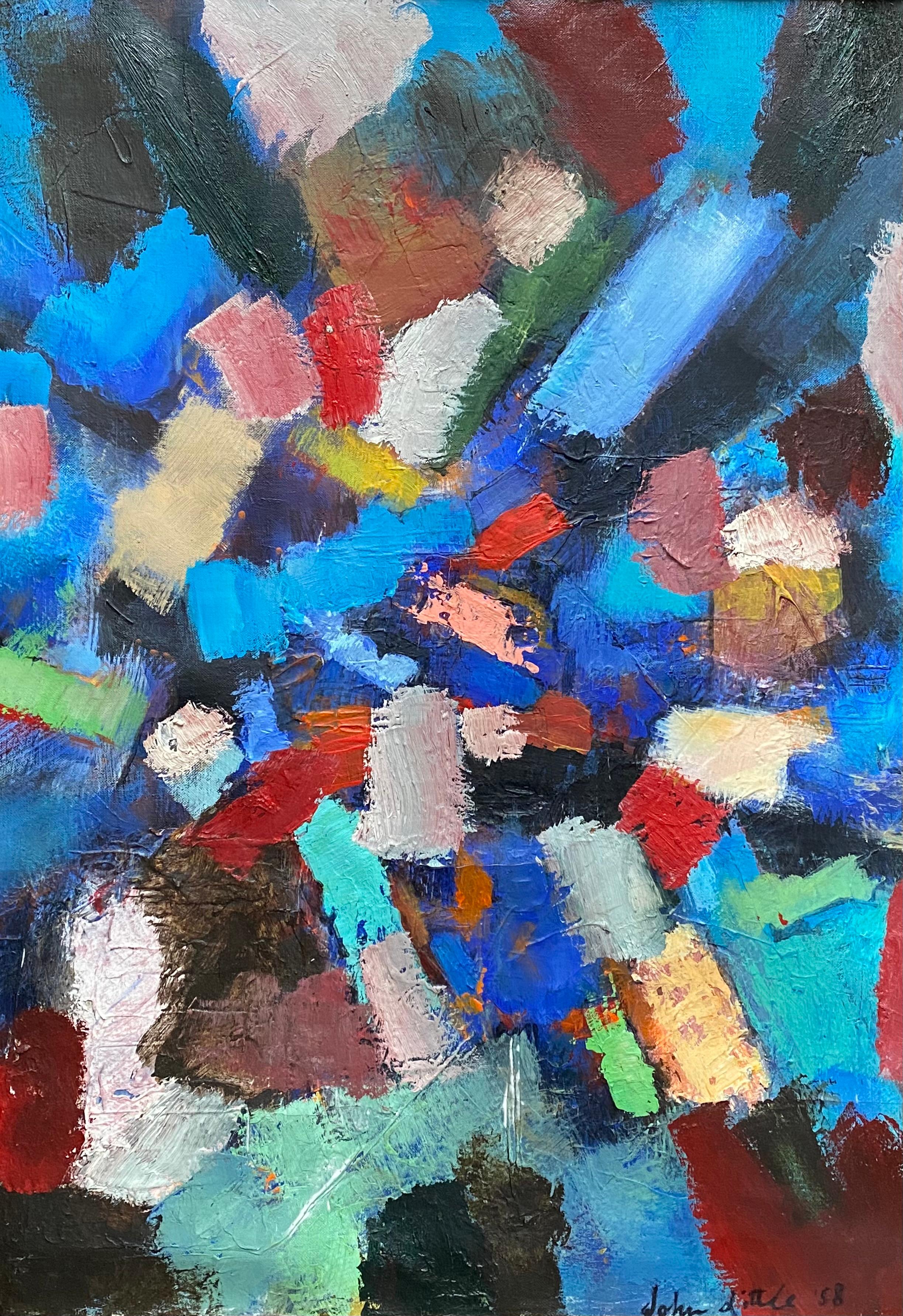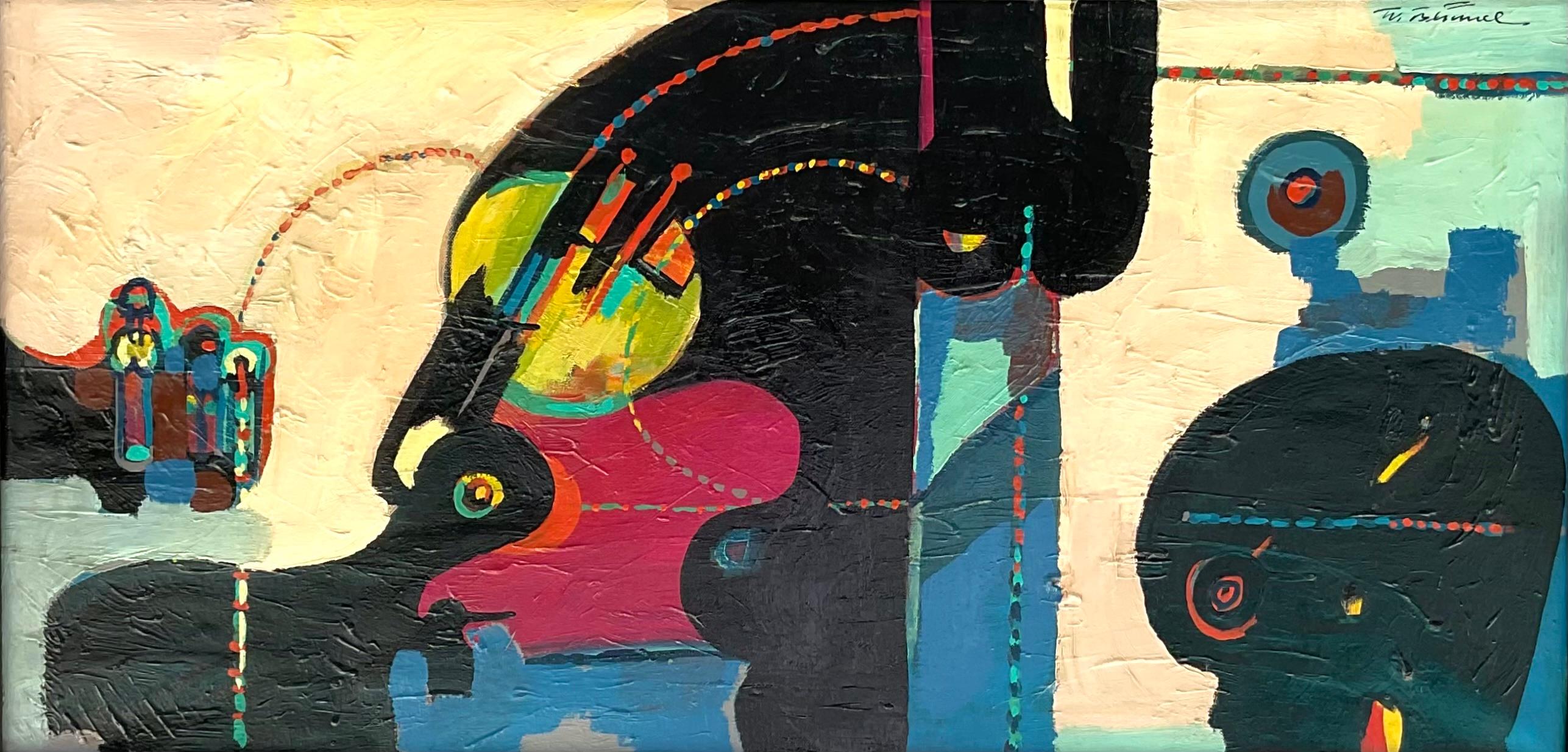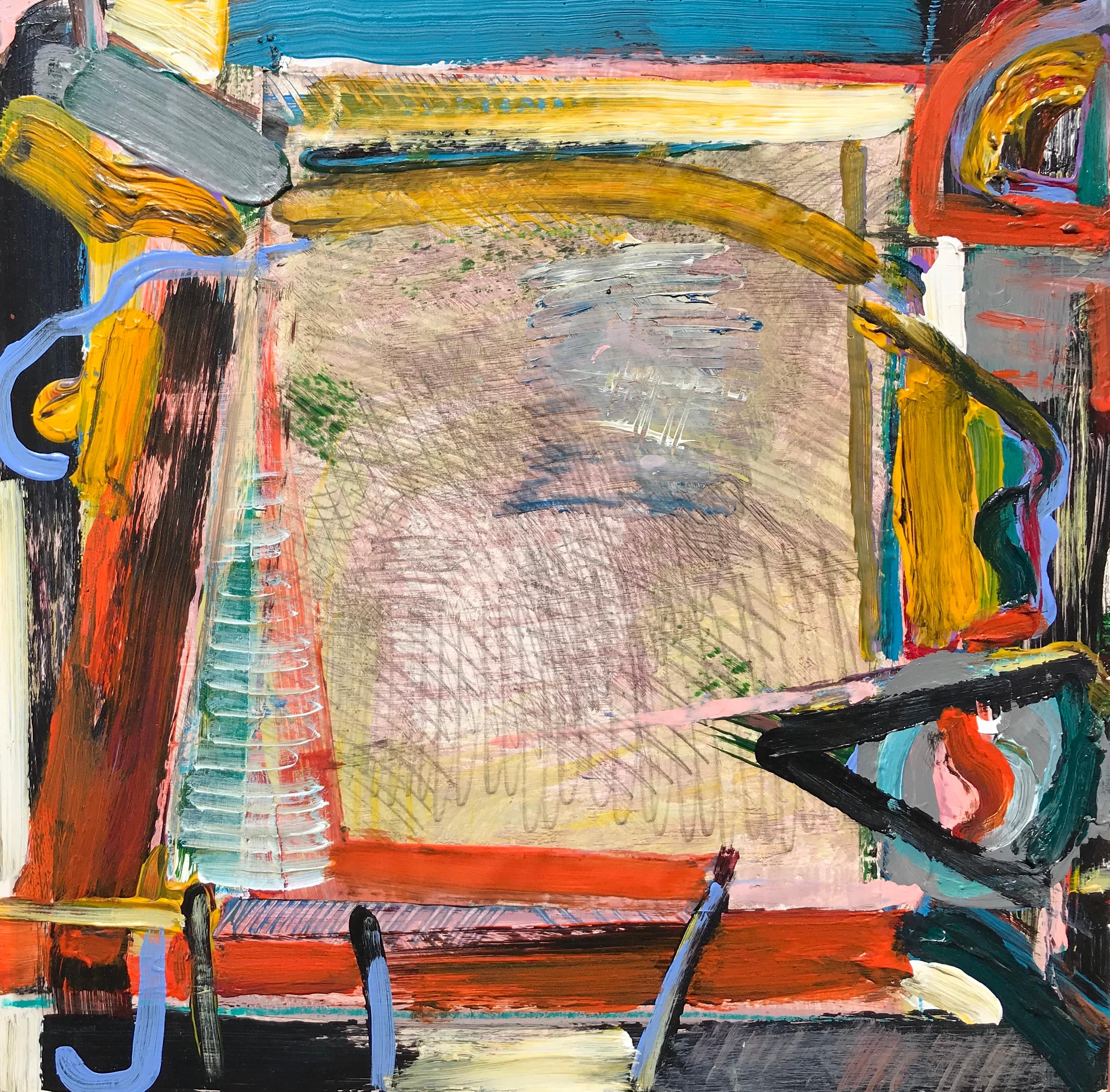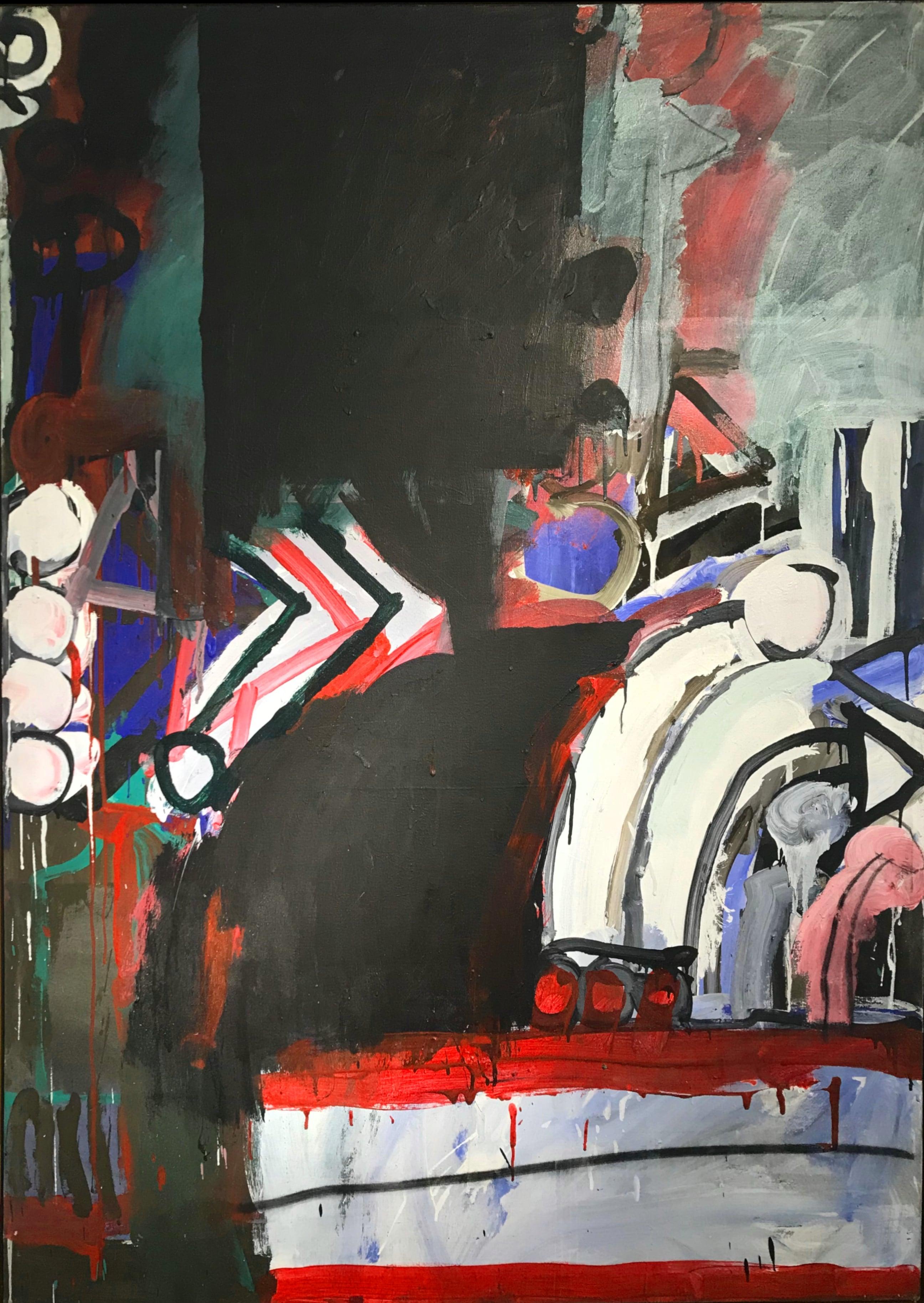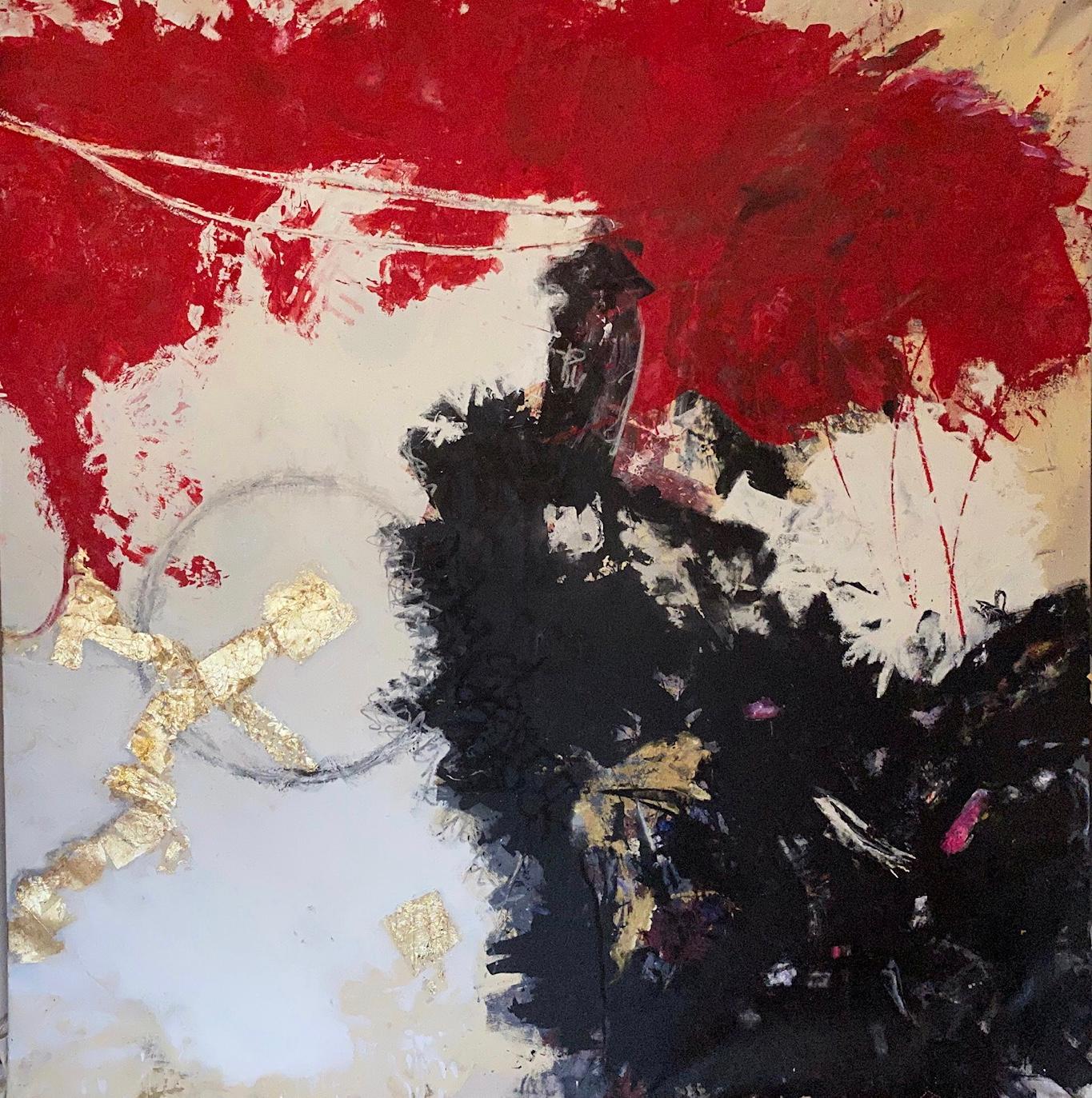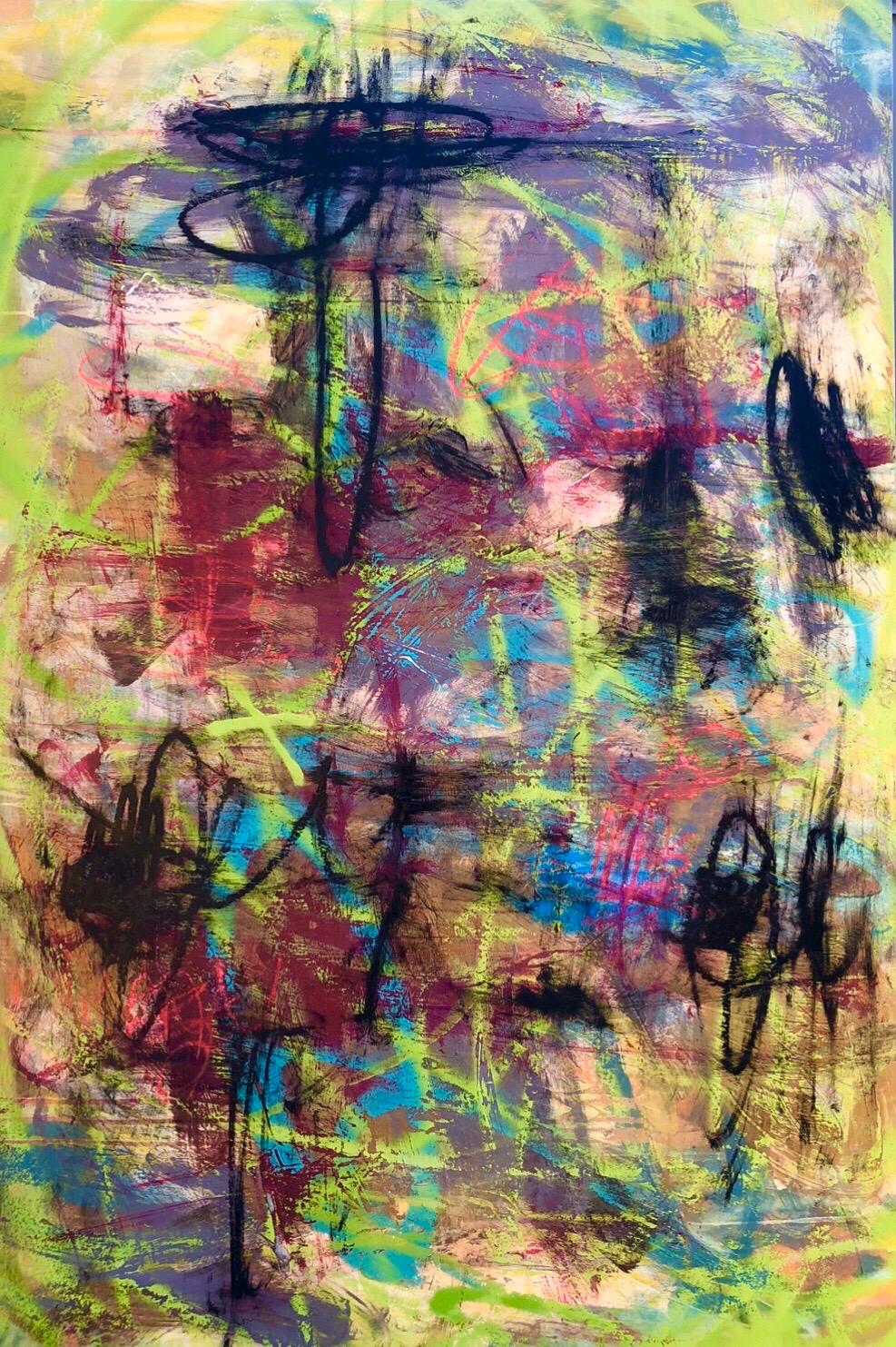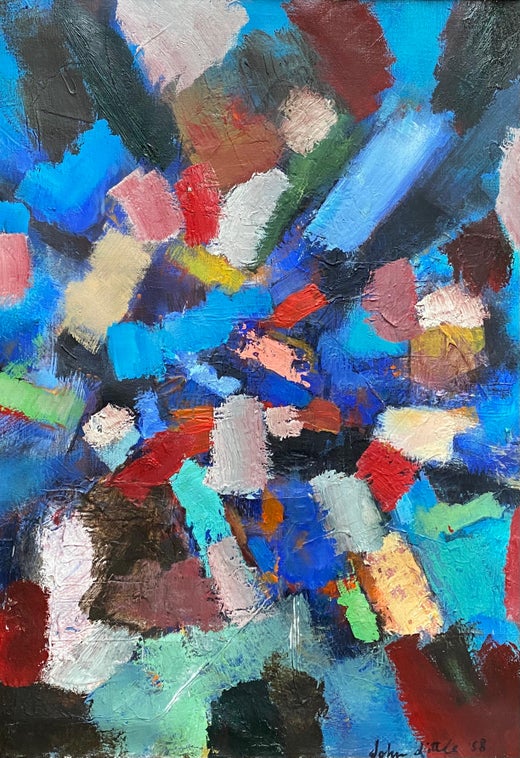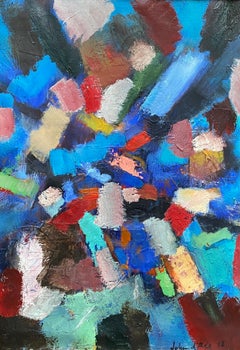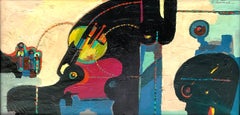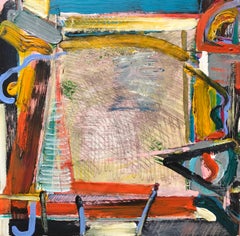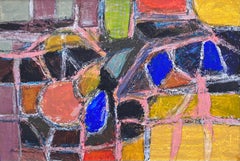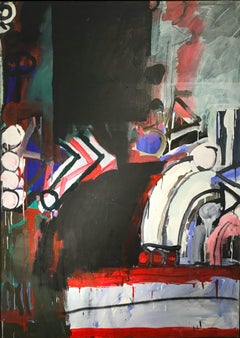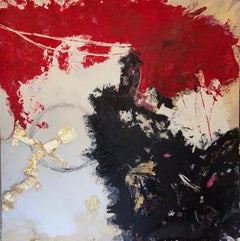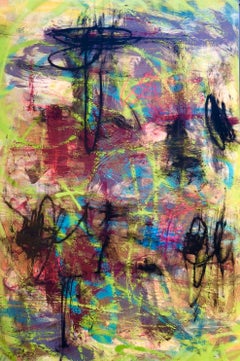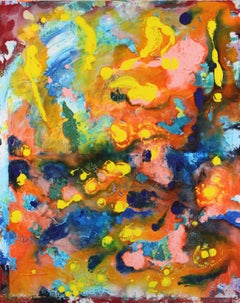Want more images or videos?
Request additional images or videos from the seller
1 of 11
John Little“Untitled”1965
1965
$9,600
$12,00020% Off
£7,396.53
£9,245.6720% Off
€8,449.14
€10,561.4320% Off
CA$13,744.08
CA$17,180.1020% Off
A$14,990.68
A$18,738.3520% Off
CHF 7,881.96
CHF 9,852.4520% Off
MX$179,894.80
MX$224,868.4920% Off
NOK 99,518.36
NOK 124,397.9520% Off
SEK 92,823.48
SEK 116,029.3520% Off
DKK 63,102.73
DKK 78,878.4220% Off
About the Item
Original oil on canvas painting by the well known abstract expressionist artist, John Little. Signed lower right. Signed and dated 1965 on top stretcher bar verso. Betty Parsons Gallery stamp verso on top stretcher bar. Betty Parsons Gallery was a very well known modern art gallery in New York City established in 1946. Condition is good. The painting is housed in its original period strip wood with brass edge gallery frame in good condition with normal wear consistent with age. Overall framed measurements are 18.75 by 13.5 inches. Provenance: A Palm Beach, Florida estate.
ARTIST BIOGRAPHY
John Little attended the Buffalo Fine Arts academy as a teenager studying with Georg Groz. A multi-disciplinary artist, Little found it hard to decide which of his talents to pursue. He had an operatic voice, became a very successful textile designer creating a flourishing business designing fabrics. After closing the textile business, it became evident that Little's love was painting powerfully gestural works filled with boldly explosive colors. While Little's early style had a linear quality inspired by Surrealism, his later works featured thick impasto and gestural brushstrokes.
After the war John Little returned to New York and with nowhere to stay, was allowed to move into Hans Hofmann's studio where his neighbors were Lee Krasner and Jackson Pollock. Although John Little was not restrained in his painting experimentation, he had a growing interest in Surrealism and the works of Picasso. Little's primary influence was the color and creative theory of Hans Hofmann; who was without doubt the most influential teacher in American history. In 1946 Little held his first one man show at the California Palace of the Legion of Honor in San Francisco, followed by a solo show at Betty Parsons in 1948. In the early 1950's, Little abandoned the flat, linear style of the 40s and progressively painted in thick, gestural paintings with broad strokes of powerful colors. In 1951 he moved to East Hampton, where he maintained a close friendship with Jackson Pollock, leading the two to hold a joint exhibition in 1955 at Guild Hall. In 1957 Little helped found the Signa Gallery, an important outpost in East Hampton for the growing New York art scene and host to many influential exhibitions. Little continued to actively exhibit until his death in 1984.
Little had solo exhibitions at, among others, Betty Parsons Gallery in 1948, Bertha Schaefer Gallery in 1957 and 1958, Worth Ryder Gallery in 1963, A.M. Sachs Gallery in 1971 and a retrospective at the Guild Hall Museum in 1982. His work is part of the permanent collections of The Metropolitan Museum of Art, The Guild Hall Museum, Ball State University Museum of Art, Galerie Beyeler (National Gallery, Basel) , Dillard University, The Bruce Museum and the University Art Museum at Berkeley, CA.
- Creator:John Little (1907-1984, American)
- Creation Year:1965
- Dimensions:Height: 18 in (45.72 cm)Width: 13 in (33.02 cm)Depth: 1.25 in (3.18 cm)
- Medium:
- Movement & Style:
- Period:
- Condition:Several tiny punctures with old repairs. See photo.
- Gallery Location:Southampton, NY
- Reference Number:1stDibs: LU14112065732
John Little
Born in Alabama, John Little attended the Buffalo (NY) Fine Arts Academy as a teenager, until 1927. Soon after, he moved to New York where he began operatic vocal training and opened what would become a very successful textile business designing fabric and wallpaper. In 1933, he enrolled at the Art Students League under the tutelage of George Grosz. Little’s early work consisted predominantly of landscapes, until 1937, when he began studying under Hans Hofmann and his work naturally shifted toward abstraction. During his time with Hofmann, he with artists such as Lee Krasner, George McNeil, Gerome Kamrowski, Giorgio Cavallon, and Perle Fine. Little entered the the service in 1942 as an aerial photographer for the Navy. Returning to New York after the war and with nowhere to stay, he reconnected with Hofmann and moved into his 8th Street studio, alongside his friend Lee Krasner and her husband Jackson Pollock. In 1946, Little earned his first solo exhibition at the California Palace of the Legion of Honor in San Francisco, with a subsequent solo exhibition at Betty Parsons Gallery in New York two years later. In the early 1950s, Little abandoned the flat, linear style in favor of a new aesthetic consisting of the thick, gestural buildup of paint. This stylistic change was concurrent with his move to East Hampton In 1951. This enabled him to continue a close friendship with Krasner and Pollock, who had already left the city in favor of the more rural area around East Hampton. Little and Pollock had a joint exhibition in 1955 at Guild Hall, one year before Pollock’s tragic death. John Little exhibited extensively during his career, with solo shows at Betty Parsons Gallery (1948), Bertha Schaefer Gallery (1957, 1958), Worth Ryder Gallery (1963), A.M. Sachs Gallery (1971), and a retrospective at the Guild Hall Museum (1982). His work can be found in many private, institutional, and corporate collections around the world, including the Metropolitan Museum of Art, Guild Hall Museum, Ball State University Museum of Art, and Galerie Beyeler.
About the Seller
5.0
Platinum Seller
Premium sellers with a 4.7+ rating and 24-hour response times
Established in 1977
1stDibs seller since 2013
552 sales on 1stDibs
Typical response time: <1 hour
- ShippingRetrieving quote...Shipping from: Sarasota, FL
- Return Policy
More From This Seller
View All“Untitled”
By John Little
Located in Southampton, NY
Early, original oil on canvas painting by the well known American abstract expressionist artist, John Little. Signed and dated lower right, 1958.
Signed and dated verso. Rose Fried...
Category
1950s Abstract Expressionist Abstract Paintings
Materials
Canvas, Oil
$14,000
“Untitled Abstract”
Located in Southampton, NY
Original oil on canvas abstract painting by the Czech/German artist, Walter Blumel. Signed upper right by the artist and verso as well. Condition is very good. Circa 1965. Overall ...
Category
1960s Abstract Expressionist Abstract Paintings
Materials
Canvas, Oil
“Untitled”
By Iliyan Ivanov
Located in Southampton, NY
Original acrylic on fiberboard painting by the Bulgarian/American artist, Iliyan Ivanov. Signed, and dated verso, 2012. Untitled. This painting is part of the “Memories of Unfinis...
Category
2010s Abstract Expressionist Abstract Paintings
Materials
Acrylic, Fiberboard
$1,480 Sale Price
20% Off
“Untitled Abstract”
By Martin Rosenthal
Located in Southampton, NY
Original abstract oil painting on heavy card stock by the American artist Martin Rosenthal. Signed lower left and dated 1960. Condition is very good. Slight bow to board. Nicely pro...
Category
1960s Abstract Expressionist Abstract Paintings
Materials
Oil, Board
$2,080 Sale Price
20% Off
“Untitled”
By Anne Raymond
Located in Southampton, NY
Original oil on fiber board painting by the American artist, Anne Raymond. Circa 1910. Condition is excellent. Signed verso. Presently unframed. Provenance: A Long Island collector...
Category
2010s Abstract Expressionist Abstract Paintings
Materials
Oil, Fiberboard
“Untitled”
Located in Southampton, NY
Highly textured acrylic on canvas painting by Susan Wilmarth. Signed verso and dated 1981. Untitled. Condition is excellent. Unframed. Provenance: A Long Island, New York collector.
Susan Wilmarth was born in 1942 and is known for her abstract paintings. She exhibited at MoMA in 1972 and her paintings are in many private collections. She was the wife of Christopher Wilmarth...
Category
1880s Contemporary Abstract Paintings
Materials
Canvas, Acrylic
$750 Sale Price
37% Off
You May Also Like
Untitled
Located in New York, NY
This work conveys a sense of mystery and excitement carefully contained. Deep black in the middle draws the viewer in, provoking one to slowly expand their view out to the edges of t...
Category
Late 20th Century Abstract Expressionist Abstract Paintings
Materials
Canvas, Acrylic
Abstract 3
By Steve Joester
Located in New York, NY
Abstract art. Strong colors. Red. Black. White.
About the Artist:
Steve Joester is a British-born Rock & Roll photographer and mixed media artist, currently living and working in New York City.
Joester, a leading Rock & Roll photographer in the 70's and 80's, had his iconic images of the greatest rock performers appear on album sleeves, posters, exhibitions and magazines worldwide. Joester made his mark shooting icons such as Mick Jagger, Bob Marley, Neil Young, Sting, and also documented Andy Warhol on film with Rob Halford of Judas Priest...
Category
2010s Abstract Abstract Paintings
Materials
Mixed Media
Abstract Expressionist Painting on Panel
By Mirtha Moreno
Located in West Palm Beach, FL
Born in Havana, Cuba, in the late 70s during a well-documented time of religious and political oppression, abstract expressionist artist Mirtha Moreno, immigrated to the United State...
Category
2010s Abstract Expressionist Abstract Paintings
Materials
Oil, Acrylic
What I Found, Abstract Painting
By Gary J. Noland Jr.
Located in San Francisco, CA
Artist Comments
Artist Gary J. Noland Jr. explores color and balance in this abstract piece. Deliberate pours, strokes, and drips create an interplay between control and sponta...
Category
21st Century and Contemporary Abstract Abstract Paintings
Materials
Acrylic
Untitled - Framed Abstract Oil Painting, Gestural Abstraction, Contemporary Art
By Dick Wray
Located in Houston, TX
This abstract oil painting by late Houston artist Dick Wray expresses a striking kinetic energy. Thick layers of paint foster a remarkable tactility commonly found in Dick Wray’s art...
Category
Early 2000s Abstract Expressionist Abstract Paintings
Materials
Canvas, Oil, Laid Paper
Natual Forces. Contemporary Abstarct Painting
By Peter Rossiter
Located in Brecon, Powys
Large acrylic on board abstract painting from the Welsh studio of Peter Rossiter.
Set in a thin black wood cradle ready for hanging
Category
2010s Abstract Abstract Paintings
Materials
Acrylic, Board
